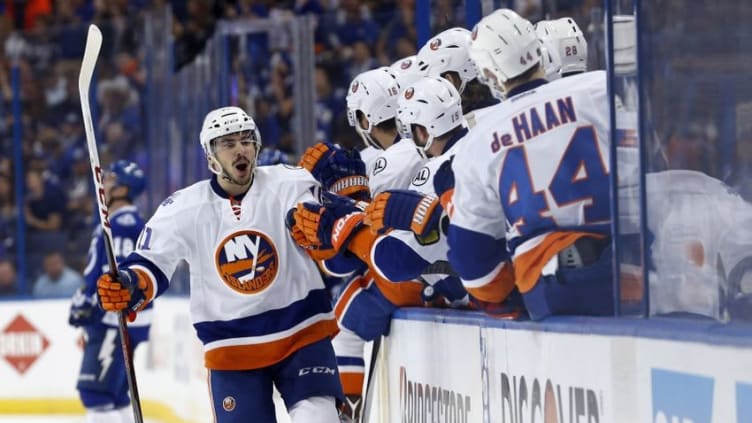New York Islanders RFA’s: What You Should Know

The New York Islanders have seven pending restricted free agents this upcoming offseason. What does a restricted free agent even mean? Eyes on Isles presents a restricted free agent primer.
For lack of better words, a restricted free agent is a protected player. While not the perfect description its the best way to initiate the conversation regarding RFAs.
The RFA process is quite difficult and tedious to understand. It’s a process that’s strictly regulated by the NHLs collective bargaining agreement. If you want to spend a good portion of your day looking over some very complex legalese here is the CBA in all it’s glory: NHL CBA
The idea behind RFAs is to give clubs the opportunity to keep their young players instead of having them flee to bigger markets. No team like investing in developing players only to have them leave right before they reach their peak potential.
The RFA process by no way removes the potential for another team with deep pockets to swoop in and try to sign a young player. Teams can sign RFAs that aren’t their own, they just have to submit an offer sheet.
But before we get to offer sheets we need to talk about qualifying offers. See, we warned you that this was fairly complex.
Qualifying Offers
Qualifying offers are benchmark contracts that the team needs to at least offer its pending restricted free agents in order for the player to continue being considered a restricted free agent.
Even if the player doesn’t actually sign the qualifying offer, they are still considered RFAs. If the team fails to tender a qualifying offer to a pending RFA before July 1st on the year in which the players current deal expires, that player becomes an unrestricted free agent.
The qualifying offers teams tender to their players are for a single year. The pay rate is based entirely on how much the player was paid in the previous year as dictated by the NHL CBA (section 10.4):
a) Offered 110% of the previous deal if it was less than $600,000;
b) Offered 105% of the previous deal if between $660,001 and $1,000,000
c) Offered 100% of the previous deal if it was over $1,000,000.
But giving a qualifying offer is by no means the end of the process. Tending a qualifying offer lets the team retain its rights of first refusal even if the player doesn’t sign the offer.
The player could sign the offer and end the process, or they could refuse the deal and continue to be an RFA and freely negotiate with other teams. That’s when offer sheets become possible.
What is an Offer Sheet?
By July 1st any upcoming RFAs whose deals are set to expire, have the option to negotiate with other teams. If the player and another team come to an agreement on terms they sign an offer sheet.
Once the offer sheet is submitted the player’s current club has the right of first refusal, which simply means that they can decide to do what they want with the offer sheet. The team can either match the offer or let the player leave and be compensated through draft picks.
What the team gets in return is based entirely on the contract the player leaving had. The following table is the offer sheet compensation table for 2016:
*Chart taken from generalfanager.com
Teams are given the right of first refusal for RFA. Meaning if any offer were to come, the team can choose to match or to take the draft picks as compensation.
What it Means for the Islanders
With a total of seven upcoming RFAs on the roster, GM Garth Snow has just over a month to get qualifying offers submitted for these players.
According to capfriendly.com, the seven restricted free agents for the New York Islanders are: Casey Cizikas, Ryan Strome, Shane Prince, Alan Quine, Scott Mayfield, Christopher Gibson and Jean-Francois Berube.
Next: Nick Leddy: The Isles Blueline Quarterback
Neither of them make over $1 million, Scott Mayfield tops the list at $925,000. Offer sheets won’t be something the Islanders will have to worry about. In fact, a year-long qualifying offer may not be necessary is Snow deems any surplus to requirements.
But now you know the complex world of restricted free agents. Congratulations, you’re well on your way to being the GM for the National Hockey League!